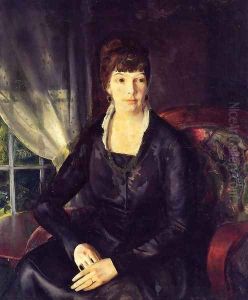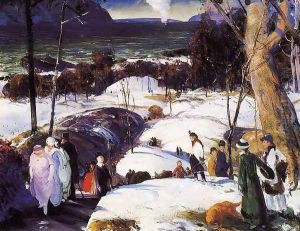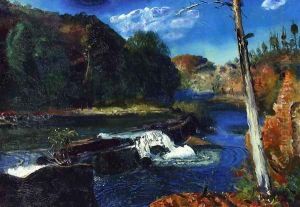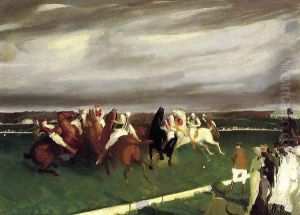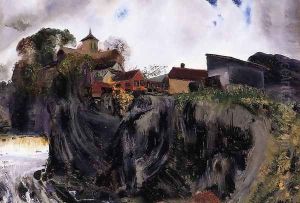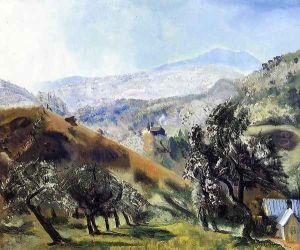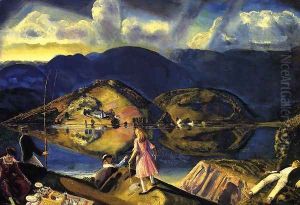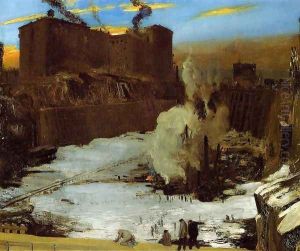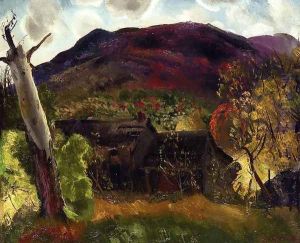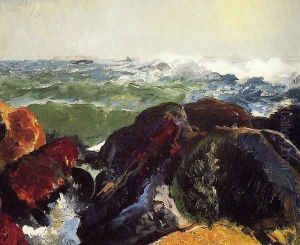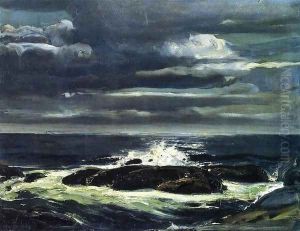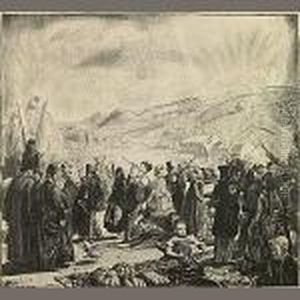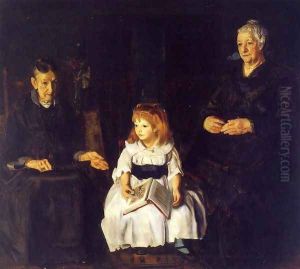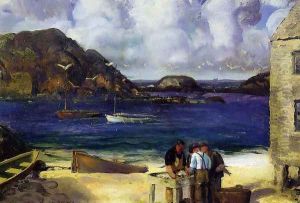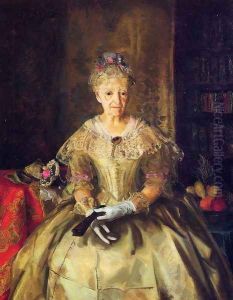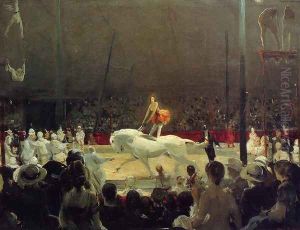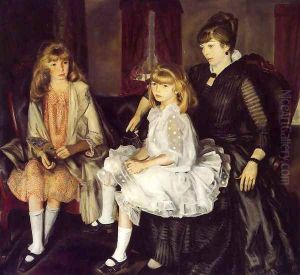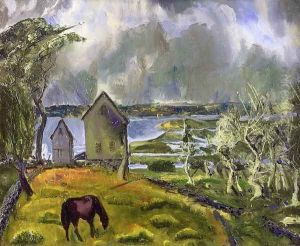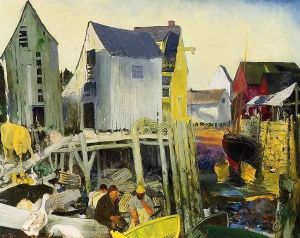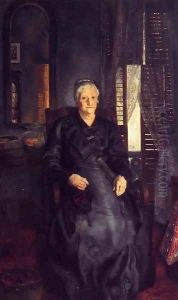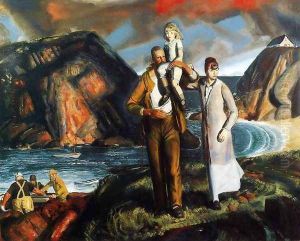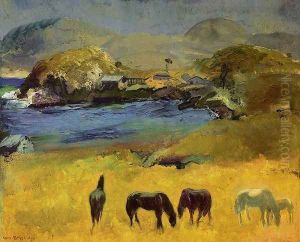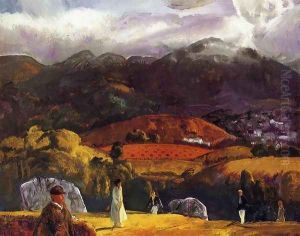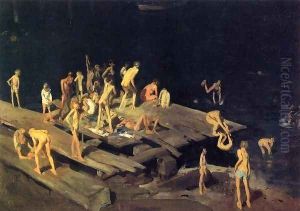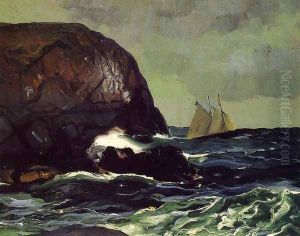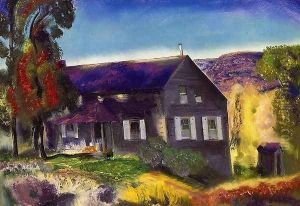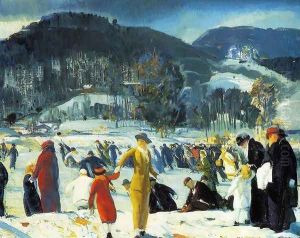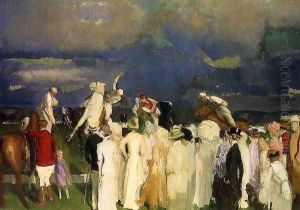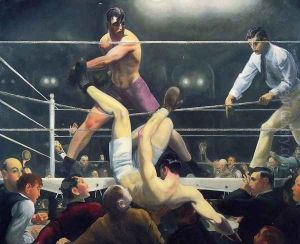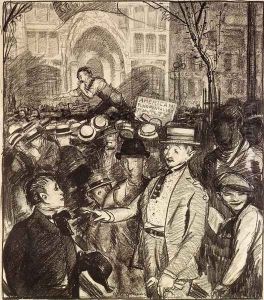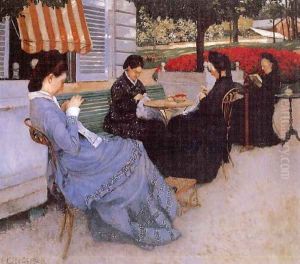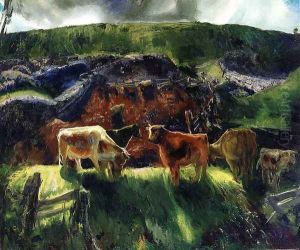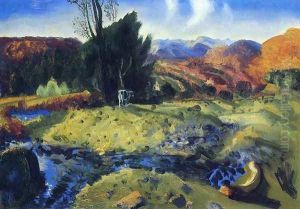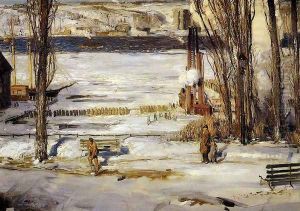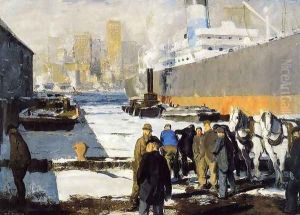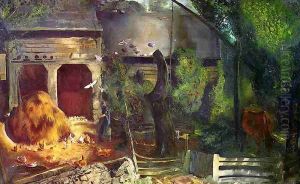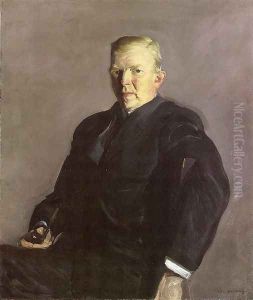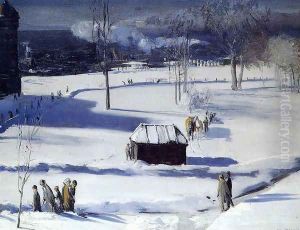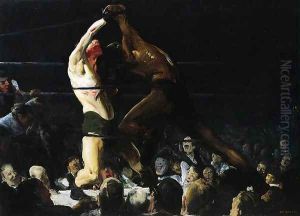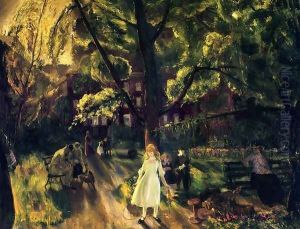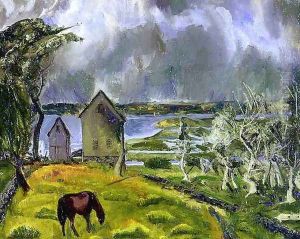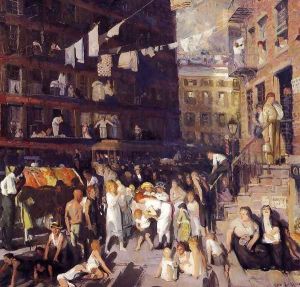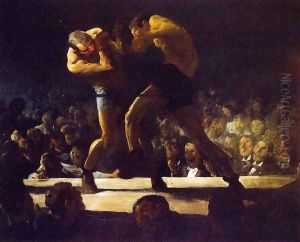George Wesley Bellows Paintings
George Wesley Bellows was an American realist painter known for his bold depictions of urban life in New York City. Born on August 12, 1882, in Columbus, Ohio, Bellows attended the Ohio State University where he played baseball and studied commercial art. He moved to New York City in 1904 to become a student of Robert Henri, a prominent artist and teacher who advocated for realism and the portrayal of everyday life.
Bellows quickly became a leading figure in the 'Ashcan School,' a movement that sought to capture the gritty reality of the city's streets, often with an emphasis on the lives of the poor and working class. He gained notoriety for his powerful images of boxers in the ring, a subject that allowed him to explore dynamic movement and the human form. His most famous boxing painting, 'Stag at Sharkey's' (1909), is celebrated for its raw intensity and energy.
Throughout his career, Bellows also created a number of poignant social commentaries. His series of paintings depicting the construction of New York's Pennsylvania Station revealed both the monumental nature of urban development and the backbreaking labor involved. Additionally, his works showed the extremes of wealth and poverty, the chaos of leisure activities, and the vibrancy of the city's diverse populations.
Bellows was also a gifted portraitist and landscape artist. He painted numerous portraits of his family and friends, showcasing his ability to capture the personality and inner life of his subjects. His landscapes, whether of coastal Maine or the grandeur of the American West, conveyed a sense of place with the same vigor found in his urban scenes.
In 1913, Bellows participated in the famous Armory Show, which introduced American audiences to European avant-garde art, and throughout his career, he continued to exhibit widely and with great success. Despite his traditional training, he was open to new movements in art and his style evolved over time, showing a looser brushwork and a brighter palette.
Tragically, Bellows' life was cut short when he died from appendicitis-related complications at the age of 42 on January 8, 1925. His death was a significant loss to the American art world. He left behind a substantial body of work that continues to be celebrated for its vitality and its incisive look at American society during the early 20th century.

